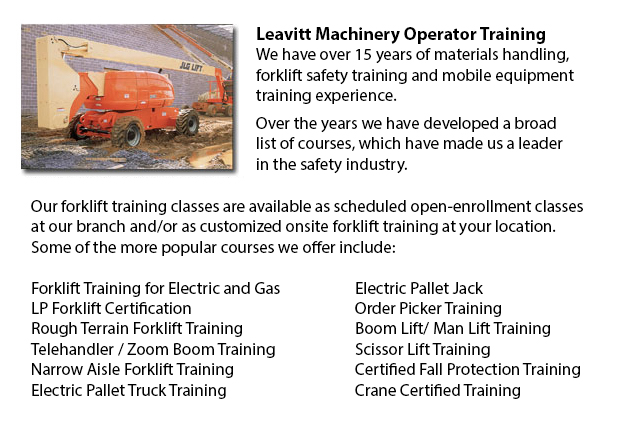
Boom Lift Certification Vernon - Elevated work platforms allow work and maintenance operations to be done at heights that can not be reached by any other method. Workers utilizing scissor lifts and boom lifts could learn the safe operation of these machines by obtaining boom lift certification training.
When work platforms are not operated safely, they have the possibility for serious injury and even death, regardless of their lift style, site conditions or application. Electrocution, falls, crushed body parts, and tip-overs could be the tragic outcome of wrong operating procedures.
To be able to prevent aerial lift incidents, individuals have to be qualified to train workers in operating the specific type of aerial lift they will be utilizing. Controls must be easily accessible beside or in the platform of boom lifts used for carrying workers. Aerial lifts must not be be modified without the express permission of other recognized entity or the manufacturer. If you are renting a lift, make certain that it is maintained properly. Before utilizing, safety devices and controls have to be checked in order to make sure they are functioning properly.
It is important to follow safe operating procedures to be able to avoid workplace incidents. Driving an aerial lift while the lift is extended should not be carried out, however, a few models are designed to be driven when the lift is extended. Set outriggers, if available. Always set brakes. Avoid slopes, but when required make use of wheel chocks on slopes which do not go beyond the slope limitations of the manufacturer. Follow manufacturer's weight and load limits. When standing on the boom lift's platform, utilize full-body harnesses or a safety belt with a two-foot lanyard tied to the basket or boom. Fall protection is not needed for scissor lifts that have guardrails. Do not climb or sit on guardrails.
This course includes the following topics: training and certification; safety tips to be able to prevent a tip-over; inspecting the work area and travel path; slopes and surface conditions; other guidelines for maintaining stability; stability factors; leverage; weight capacity; testing control functions; pre-operational check; safe operating practices; mounting a vehicle; safe driving procedures; overhead obstacles and power lines; PPE and fall protection; utilizing harnesses and lanyards; and prevent falling from platforms.
The trainee who is successful will become familiar with the following: authorization and training procedures; pre-operational inspection procedures; how to avoid tip-overs; factors affecting the stability of boom and scissor lifts; how to use PPE, how to utilize the testing control functions and fall prevention strategies.
-
Heavy Equipment Training Vernon
Heavy Equipment Training Vernon - The two most common kinds of heavy equipment training are categorized into the categories of equipment; equipment which is fashioned with tracks and those with rubber tires. The tracked vehicle are heavy duty machine... More -
Aerial Lift, Boom Lift, Man Lift, Scissor Lift Training in Vernon
Lift tables or scissor platform lifts could lift up both people and materials vertically. They are most often utilized in industrial, construction and commercial environments. Usually, the use of a scissor lift is to lift and lower materials from one... More -
Crane Operator Classes Vernon
Crane Operator Classes Vernon - Crane operator training is for operators and supervisors of overhead lifting equipment. The course is suitable for both current and new operators. Course content addresses relevant provincial, state and federal safety... More -
Zoom Boom Training Vernon
Zoom Boom Training Vernon - Zoom Boom Training focuses on correctly training potential operators on variable reach forklifts. The training objectives consist of gaining the knowledge of the machine's physics and to be able to define the tasks of the... More -
Skid Steer Ticket Vernon
Skid Steer Ticket Vernon - The lift arms on the skid-steer loader are situated alongside the driver together with pivots at the back of the driver's shoulders. These features makes the skid-steer loader different than the traditional front loader. Be... More -
Manlift Ticket Vernon
Manlift Ticket Vernon - The Elevated Platforms and Manlifts Certification course helps to provide the needed training on the safe operating procedures, work practice, rules and regulations regarding the daily activities for the operators of this mach... More -
Scissor Lift Ticket Vernon
Scissor Lift Ticket Vernon - The scissor forklift has been a great advantage to many businesses in view of the fact that the effort and manpower to run one of these machines is very minimum. Furthermore, numerous workplace injuries have been prevente... More -
Aerial Lift Safety Training Vernon
Aerial Lift Safety Training Vernon - There are roughly 26 to 30 construction fatalities in North America due to the utilization of aerial lifts. Nearly all of the individuals killed are craftsmen like for example painters, electrical workers, laborer... More

Forklift Training Vernon
TOLL FREE: 1-888-254-6157
Vernon, British Columbia
forklifttrainingvernon.com
Email Us
About Us


